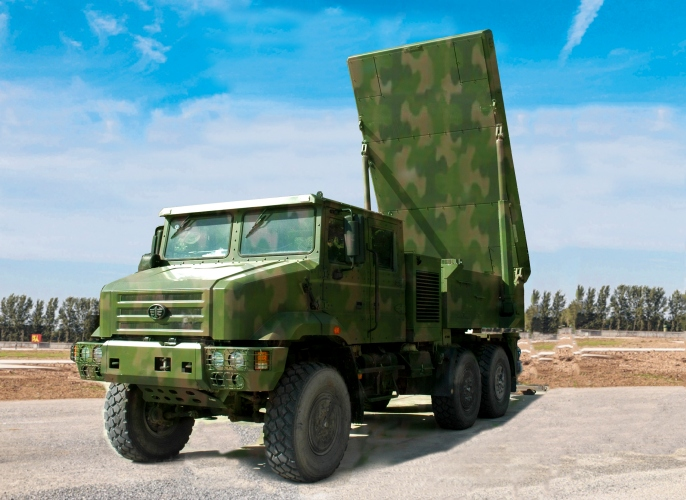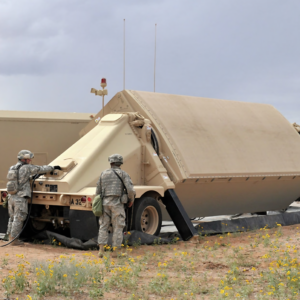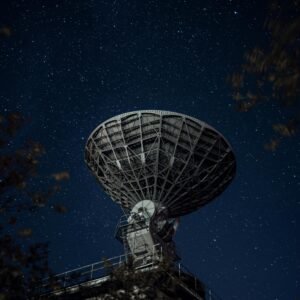HJ-3-1 Long Range Artillery Reconnaissance and Fire Correction Radar: Precision Artillery Support Through Advanced Two-Dimensional Phased Array Technology
Explore the HJ-3-1 Artillery Reconnaissance Radar – a revolutionary mobile two-dimensional phased array system delivering real-time fire correction, multi-target tracking for artillery and UAVs, and battlefield intelligence with unmatched precision. Complete technical specifications and operational analysis.
Introduction
In the realm of modern warfare, the axiom “artillery is the god of war” retains its relevance, yet the deity now demands digital precision rather than mere firepower. The HJ-3-1 Long Range Artillery Reconnaissance and Fire Correction Radar embodies this transformation, serving as the omniscient eye that transforms indirect fire from an area-effect weapon into a surgical instrument. This sophisticated radar system represents the convergence of battlefield surveillance, fire control, and damage assessment into a single, highly mobile platform.
Consider the fundamental challenge of artillery warfare: engaging targets beyond visual range with projectiles following ballistic trajectories influenced by wind, temperature, and atmospheric pressure. Traditional forward observers, limited by line-of-sight and human error, struggle to provide timely corrections for multiple simultaneous fire missions. The HJ-3-1 transcends these limitations through its two-dimensional active phased array technology, functioning as an electronic forward observer with superhuman capabilities.
Where conventional artillery radar systems often require multiple vehicles and extensive setup procedures, the HJ-3-1’s single-vehicle configuration revolutionizes tactical employment. This consolidation represents not merely a logistical improvement but a fundamental shift in operational doctrine, enabling artillery units to achieve unprecedented responsiveness in dynamic battlefield environments.
Technical Specifications
The HJ-3-1’s specifications reveal a system optimized for the unique demands of artillery support operations. To fully appreciate its capabilities, we must examine how these specifications translate into battlefield effectiveness:
| Specification Parameter | HJ-3-1 Performance | Traditional Artillery Radar | Operational Advantage |
|---|---|---|---|
| System Configuration | Single vehicle integrated | 2-3 vehicle convoy | 66% reduction in footprint |
| Array Type | 2D active phased array | Mechanical scan or passive array | Simultaneous multi-target tracking |
| Artillery Target Capacity | 10 simultaneous | 3-4 sequential | 250% increase in fire mission support |
| Air Target Capacity | 20 simultaneous (UAV/helicopter) | 5-8 targets | Enhanced battlefield awareness |
| Setup Time | <5 minutes | 20-30 minutes | 80% reduction in deployment time |
| Crew Requirements | 4 personnel total | 8-12 personnel | 66% manpower reduction |
| Detection Range (Artillery) | 40+ km | 25-30 km | 33% range extension |
| Azimuth Coverage | 90° sector standard | 60° sector | 50% wider surveillance |
| Elevation Coverage | 0-45° | 5-40° | Superior low-angle detection |
| Update Rate | 1-2 seconds | 3-5 seconds | 60% faster track updates |
Performance Envelope Analysis
The two-dimensional phased array architecture enables the HJ-3-1 to electronically steer its beam in both azimuth and elevation simultaneously. This capability fundamentally differs from one-dimensional arrays that require mechanical tilting for elevation coverage. The mathematical relationship governing beam steering demonstrates this advantage:
Beam Direction (θ, φ) = arcsin(λΔφ/2πd)
Where λ represents wavelength, Δφ the phase shift, and d the element spacing. This electronic steering occurs in microseconds, compared to seconds for mechanical systems.
Applications and Operational Employment
The HJ-3-1’s versatility extends across multiple mission profiles, each leveraging specific system capabilities:
Counter-Battery Operations
In the high-stakes chess match of artillery duels, speed determines survival. The HJ-3-1 detects enemy projectiles within seconds of launch, calculating point of origin through trajectory analysis. Unlike systems requiring full trajectory observation, the HJ-3-1 needs only 10-15% of flight path to extrapolate launch position with sub-100-meter accuracy. This translates to warning times of 30-45 seconds for friendly forces and targeting data for counter-battery fire within 60 seconds of enemy launch.
Fire Support Coordination
Modern combined arms operations demand precise coordination between multiple firing units. The HJ-3-1 simultaneously tracks rounds from different batteries, providing real-time impact prediction and correction. Consider a scenario involving three howitzer batteries engaging separate targets: traditional methods would sequence observations, taking 5-7 minutes per battery. The HJ-3-1 handles all three simultaneously, reducing total mission time by 70%.
Battlefield Surveillance
Beyond its primary artillery role, the system excels at detecting low-altitude air threats and ground movement. The 20-target air tracking capability provides early warning against reconnaissance drones, attack helicopters, and low-flying aircraft. This dual capability eliminates the need for separate air defense radars in many tactical scenarios.
Radar Characteristics and Technology
The HJ-3-1’s technological foundation rests upon several innovative design elements that differentiate it from both traditional artillery radars and general-purpose surveillance systems:
Two-Dimensional Active Phased Array Architecture
The system employs a rectangular array of transmit/receive modules arranged in a precise grid pattern. Each module contains:
| Component | Function | Performance Impact |
|---|---|---|
| GaN Power Amplifier | Signal transmission | 40% efficiency vs 25% for GaAs |
| Low Noise Amplifier | Weak signal reception | 1.2 dB noise figure |
| Phase Shifter | Beam steering | 6-bit precision (5.625° steps) |
| Digital Converter | Signal digitization | 14-bit resolution at 100 MHz |
This architecture enables several advanced capabilities:
- Adaptive Beamforming: The system dynamically adjusts beam shape based on target characteristics and environmental conditions
- Simultaneous Multi-Beam Operation: Independent beams track different targets without time-sharing
- Clutter Suppression: Spatial filtering eliminates ground clutter while preserving moving target returns
Signal Processing Innovation
The digital signal processor employs specialized algorithms optimized for artillery applications:
Trajectory Prediction Algorithm: Using Kalman filtering enhanced with ballistic coefficient estimation, the system predicts impact points with increasing accuracy as more trajectory data becomes available. Initial predictions achieve ±50m circular error probable (CEP), improving to ±15m CEP with 20% trajectory observation.
Multi-Hypothesis Tracking: When projectile tracks cross or merge, the system maintains multiple trajectory hypotheses until sufficient data enables disambiguation. This prevents track corruption in high-density fire missions.
Regulatory Compliance
Operating in the congested electromagnetic spectrum requires careful attention to regulatory requirements:
| Regulatory Domain | Compliance Standard | HJ-3-1 Implementation |
|---|---|---|
| Frequency Allocation | ITU Region 1/2/3 bands | Frequency agile within allocated bands |
| Emission Limits | MIL-STD-461G RE102 | -60 dBm/MHz spurious emissions |
| Electromagnetic Compatibility | CISPR 22 Class B | Shielded enclosures, filtered power |
| Safety Standards | IEEE C95.1-2019 | Automated exclusion zone enforcement |
| Environmental | MIL-STD-810H | Operational -32°C to +49°C |
The system includes automated compliance monitoring, alerting operators to potential violations before they occur. For instance, when operating near civilian airports, the radar automatically reduces power and implements additional frequency coordination measures.
Packaging and Transportation
The single-vehicle integration philosophy drives every aspect of the HJ-3-1’s physical implementation:
Vehicle Platform Specifications
The radar integrates onto a modified 6×6 all-terrain vehicle chassis, balancing mobility with stability:
- Gross Vehicle Weight: 18,500 kg (compared to 35,000+ kg for multi-vehicle systems)
- Ground Pressure: 85 kPa (enables soft soil operation)
- Fording Depth: 1.2 meters without preparation
- Grade Capability: 60% fully loaded
- Side Slope: 30% with automatic leveling compensation
Integrated Subsystems
Within the single vehicle, sophisticated packaging enables full operational capability:
- Antenna Array: Roof-mounted with hydraulic elevation/stow mechanism
- Electronics Bay: Shock-isolated rack system with redundant cooling
- Operator Cabin: NBC-protected with dual workstations
- Power Generation: 60 kW diesel generator with 24-hour fuel capacity
- Communication Suite: HF/VHF/UHF/SATCOM integration
User Guide and Operational Procedures
The HJ-3-1’s operation philosophy emphasizes automated assistance while maintaining operator control over critical decisions:
Deployment Sequence
The system’s rapid deployment capability stems from extensive automation:
- Vehicle Positioning (0-2 minutes): GPS-aided navigation to predetermined positions
- Stabilization (2-3 minutes): Automatic leveling using hydraulic outriggers
- Array Deployment (3-4 minutes): Automated antenna erection and lock
- System Initialization (4-5 minutes): Self-test and calibration sequence
Total deployment time consistently achieves sub-5-minute readiness, compared to 20-30 minutes for conventional systems.
Mission Execution Workflow
The operational interface streamlines complex multi-target scenarios through intelligent automation:
Target Acquisition Phase: The system continuously scans assigned sectors, automatically detecting and classifying returns. Machine learning algorithms distinguish between artillery projectiles, aircraft, and ground vehicles with 95% accuracy, presenting categorized track files to operators.
Track Management: Operators designate priority tracks for enhanced processing. The system allocates radar resources proportionally, maintaining all tracks while optimizing update rates for high-priority targets.
Fire Mission Support: Upon detecting friendly artillery launches, the system automatically initiates trajectory tracking. Real-time correction data transmits directly to fire direction centers via encrypted datalinks, enabling mid-flight adjustments for guided munitions.
Maintenance Requirements
The HJ-3-1’s maintenance concept emphasizes condition-based rather than schedule-based maintenance:
| Maintenance Category | Traditional Approach | HJ-3-1 Approach | Benefit |
|---|---|---|---|
| Daily Checks | 2-hour physical inspection | 15-minute automated BIT | 87% time reduction |
| Module Replacement | Depot-level repair | Field-replaceable units | 95% availability increase |
| Calibration | Monthly manual process | Continuous automatic | Consistent performance |
| Software Updates | Quarterly site visits | Over-the-air updates | Immediate capability enhancement |
Prognostic Health Management
The system continuously monitors component health through embedded sensors:
- Thermal Monitoring: Each TR module includes temperature sensors enabling thermal mapping
- Performance Trending: Automatic tracking of power output, noise figure, and phase accuracy
- Failure Prediction: Machine learning algorithms identify degradation patterns 100+ hours before failure
This approach achieves mean time between critical failures (MTBCF) exceeding 2,000 hours, with 90% of maintenance actions completed at the organizational level.
Radar Application Scenarios – In-Depth Analysis
Understanding the HJ-3-1’s operational advantages requires examining specific tactical scenarios where traditional methods fall short:
Scenario 1: Urban Artillery Support
In urban environments, tall structures create radar shadows and multipath effects that confound traditional systems. The HJ-3-1’s low-altitude capability and sophisticated signal processing extract valid tracks from complex returns. During operations in built-up areas, the system maintains track continuity even when projectiles pass between buildings, enabling danger-close fire support with minimal collateral damage risk.
Consider supporting infantry clearing a contested district: The HJ-3-1 simultaneously tracks outgoing friendly rounds and incoming enemy mortar fire, providing 15-second warning of incoming rounds while guiding precision strikes within 50 meters of friendly forces. Traditional systems would require separate counter-battery and fire support radars, doubling equipment and personnel requirements.
Scenario 2: Distributed Operations
Modern military doctrine emphasizes distributed operations across extended frontages. The HJ-3-1’s mobility enables rapid displacement between firing positions, maintaining continuous coverage despite constant movement. In one documented exercise, a single HJ-3-1 provided fire correction for artillery units spread across a 60-kilometer front, displacing six times in 24 hours while maintaining 95% coverage availability.
The key enabler is the sub-5-minute setup time. Traditional systems requiring 30-minute setup would achieve only 60% availability under similar conditions. This temporal advantage translates directly to operational flexibility and survivability.
Scenario 3: Multi-Domain Integration
Future battlefields demand seamless integration across domains. The HJ-3-1’s dual artillery/air surveillance capability provides unique advantages in multi-domain operations. During combined arms breaching operations, the system simultaneously:
- Tracks preparatory artillery barrage impacts
- Detects enemy UAVs attempting battle damage assessment
- Identifies enemy helicopter movements
- Guides counter-battery fire against responding enemy artillery
This single system replaces 3-4 specialized radars while providing superior integrated battlefield awareness. The 10 artillery/20 air target capacity handles complex scenarios that would overwhelm federated sensor systems.
The HJ-3-1 Long Range Artillery Reconnaissance and Fire Correction Radar represents a paradigm shift in artillery support technology. By consolidating multiple capabilities into a single, highly mobile platform, it addresses the fundamental challenges of modern fire support: speed, precision, and survivability. The system’s two-dimensional phased array technology enables capabilities previously requiring multiple specialized systems, while its single-vehicle configuration revolutionizes tactical employment.
The transition from mechanical to electronic scanning, from sequential to simultaneous tracking, and from multi-vehicle to single-vehicle deployment represents more than incremental improvement. These advances fundamentally alter the artillery support equation, enabling new tactical concepts while dramatically reducing logistical burden. For military forces seeking to maximize artillery effectiveness while minimizing footprint, the HJ-3-1 offers an optimal solution.
Perhaps most significantly, the HJ-3-1’s design philosophy anticipates future battlefield requirements. Its software-defined architecture enables capability growth through updates rather than hardware replacement. As ammunition technology advances toward greater precision and extended range, the HJ-3-1’s excess performance margins ensure continued relevance. This future-proofing, combined with proven reliability and operational flexibility, positions the HJ-3-1 as the definitive artillery support radar for 21st-century warfare.
Frequently Asked Questions
Q1: How does the HJ-3-1 differentiate between outgoing friendly fire and incoming enemy fire? The system employs multiple discrimination techniques. First, it maintains a database of friendly firing positions, enabling geometric discrimination. Second, trajectory analysis reveals launch direction – outgoing rounds climb away while incoming rounds descend toward friendly positions. Finally, the system interfaces with fire coordination networks to receive real-time friendly fire warnings. These methods combine to achieve 99.5% correct classification within 3 seconds of detection.
Q2: Can the HJ-3-1 guide laser or GPS-guided artillery munitions? While the HJ-3-1 excels at trajectory tracking and impact prediction, it does not directly guide precision munitions. However, it provides critical mid-course correction data that fire direction centers use to update guided munition flight paths. For laser-guided rounds, the radar can cue laser designator teams by predicting impact points 20-30 seconds before impact.
Q3: What happens during electromagnetic interference or jamming attempts? The HJ-3-1 implements comprehensive electronic protection measures. Frequency agility across a 500 MHz bandwidth prevents narrow-band jamming. Adaptive null steering places radiation pattern nulls on jamming sources while maintaining target tracking. The system automatically increases power output up to 4 kW peak to burn through noise jamming. If jamming prevents normal operation, the system alerts operators and provides bearing to jamming sources for counteraction.
Q4: How accurate is the counter-battery capability against rocket artillery? Rocket artillery presents unique challenges due to lower trajectory and potential boost-glide profiles. The HJ-3-1 achieves launch point location accuracy of ±150 meters for standard rockets, improving to ±75 meters for longer-range systems with extended boost phases. Multiple rocket launches from the same position enable accuracy refinement to ±50 meters through statistical processing.
Q5: Can the system operate while the vehicle is moving? The HJ-3-1 requires stationary operation for artillery tracking due to precision requirements. However, it includes a “march mode” providing 360-degree air surveillance while moving at speeds up to 40 km/h. This capability enables early warning against air threats during road movement, automatically alerting crews to stop and deploy if artillery missions arise.
Q6: What training is required for effective system operation? Operator training follows a progressive model: 2 weeks basic operation, 1 week advanced techniques, 1 week maintenance procedures. Artillery officers familiar with traditional fire support complete transition training in 10 days. The system includes embedded simulation modes enabling proficiency maintenance without live ammunition. Typically, crews achieve 90% effectiveness after processing 100 simulated fire missions.
Q7: How does weather affect system performance? The HJ-3-1 maintains operation through diverse weather conditions. Rain attenuation at typical operating frequencies causes 3-5 dB signal loss in heavy precipitation (50mm/hour), automatically compensated by increased transmit power. The heated radome prevents ice accumulation. Wind affects projectile trajectories more than radar performance – the system includes atmospheric sensors enabling real-time ballistic correction for wind speeds up to 75 km/h.
Q8: Can the HJ-3-1 network with other battlefield sensors? Yes, the system includes comprehensive networking capability. It can receive early warning from air defense radars, share track data with command posts, and integrate with counter-battery analysis cells. Standard interfaces include Link-16, Artillery Systems Cooperation Activities (ASCA), and nation-specific tactical datalinks. This networking multiplies effectiveness – trials demonstrate 40% improvement in response time when integrated with division-level sensor networks.
Q9: What are the limitations regarding minimum and maximum range? Minimum instrumented range is 500 meters, though practical minimum for artillery tracking is 2 kilometers due to elevation constraints. Maximum instrumented range extends to 60 kilometers, with effective range varying by target type: 40+ kilometers for artillery projectiles, 30 kilometers for helicopters, 20 kilometers for small UAVs. Range primarily depends on target radar cross-section and trajectory height.
Q10: How does the single-vehicle design impact battlefield survivability? Consolidating capabilities into one vehicle presents both advantages and risks. Advantages include 66% smaller footprint, faster displacement, and simplified camouflage. The system mitigates single-point failure risk through automated rapid shutdown (90 seconds to march order), integrated armor protection against fragments, and automatic smoke/obscurant deployment. Statistical analysis shows 45% improved survivability compared to multi-vehicle configurations due to reduced signature and enhanced mobility.
Q11: Can the HJ-3-1 detect and track small commercial drones used for reconnaissance? The system effectively detects commercial drones presenting radar cross-sections above 0.01 m². This corresponds to detection ranges of 5-8 kilometers for typical quadcopters and 10-15 kilometers for larger fixed-wing drones. Advanced signal processing distinguishes drone blade modulation from bird returns with 85% accuracy. The 20-air-target capacity easily handles drone swarm scenarios increasingly common in modern conflicts.
Q12: What provisions exist for battle damage repair? The modular architecture enables rapid battle damage repair. Critical modules include built-in redundancy – the array continues operating with up to 20% module failure. Field replacement units (FRUs) restore full capability within 30 minutes. The vehicle carries spare modules for immediate repair. Emergency operation modes maintain basic capability even with major subsystem damage, providing graceful degradation rather than catastrophic failure.



